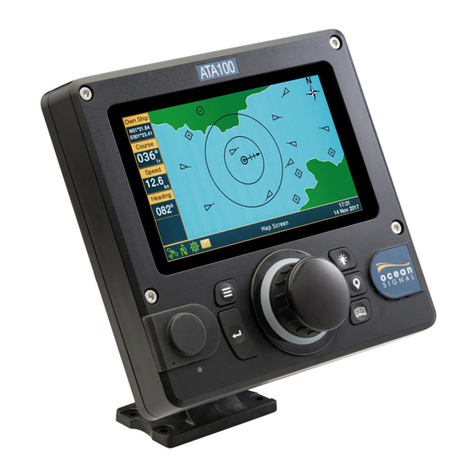
ATB1 USER MANUAL
4 912S-02692-1.11 18/07/2022
1. GENERAL
1.1 Exposure to RF Electromagnetic Energy
This product complies with EN62311:2008 (EU) and RSS-102 (Canada).
This product has been evaluated for compliance with the FCC RF exposure limits given in
CFR 47 part 1.307(b) at a distance greater than 25cms from the antenna.
1.2 Warnings
This product is designed to assist navigation and should not be used in the place of ap-
propriate navigational judgment. AIS should be used as a complement to navigation and
should not be used to replace installed equipment such as RADAR or ECDIS.
!AIS devices can only monitor other AIS equipped vessels. It is the respon-
sibility of the vessels crew and skipper to always be aware of surrounding
vessels that may not be fitted with AIS equipment.
!The ATB1 must always be used in conjunction with the supplied GPS anten-
na. Use of an alternative GPS antenna may impair the functionality of the
system.
!This product contains no user-serviceable parts. All maintenance work
should be carried out by trained persons authorized by Ocean Signal.
!Do not install in a flammable atmosphere (engine room, near to fuel tanks)
or in a location subject to excessive solar heat (direct sunlight, beneath a
windshield).
!The ATB1 is a maritime radio transmitter and is subject to radio licensing
laws. Contact the relevant authority in your country for local license re-
quirements.
!False information transmitted can result in risk to other vessels as well as
your own. It is the user’s responsibility to ensure that vessel sensors are
configured and calibrated correctly and that all AIS information transmit-
ted is accurate and up to date. It is a criminal offence in some countries to
transmit falsified data.
!USA Users only: It is a violation of the rules of the FCC to input an MMSI that
has not been properly assigned to the end user, or to otherwise input any
inaccurate data in this device. The entry of static data into this device shall
be performed by the vendor of the device or by an appropriately qualified
person in the business of installing marine communications equipment on
board vessels. Instructions on how to accurately enter and confirm static
data in the device can be found in Section 3 of this user manual.































